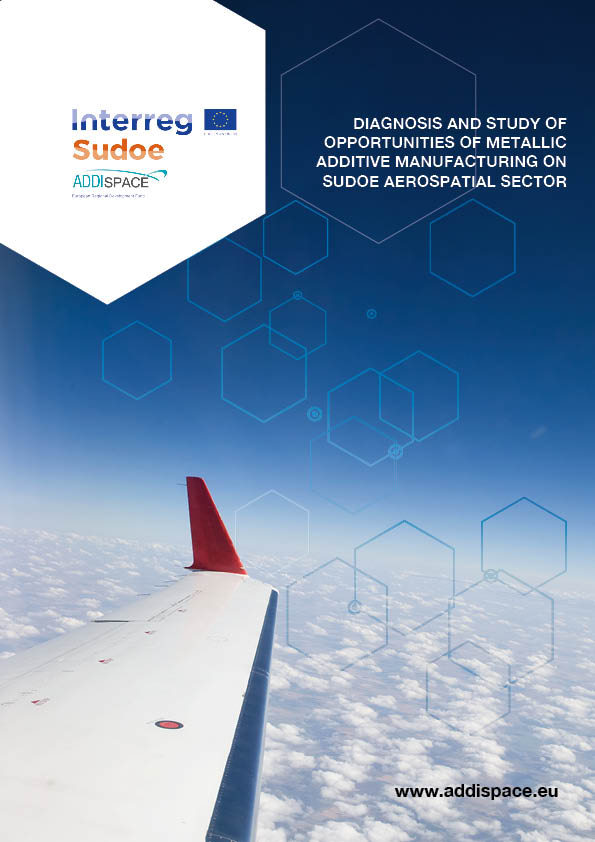
FIRST DIAGNOSIS AND STUDY OF ADDITIVE MANUFACTURING TECHNOLOGY OPPORTUNITIES IN THE AEROSPACE SECTOR OF THE SUDOE NOW AVAILABLE
The Diagnosis and Study of Opportunities describes the latest advances in the field of additive manufacturing (AM) technologies, and the application trends of these technologies in the aerospace sector, as well as a study on the difficulties to adopt them.
Additive manufacturing
Additive Manufacturing or 3D Printing with industrial purposes, is a top class driver of development to complement traditional manufacturing processes, and in some cases, to replace them. Hence, AM is attracting more and more attention all over the world. This is reflected in the exponential global growth forecast for 3D printing or additive manufacturing industry between 2014 and 2020.
Today, AM has led to a revolution both in the field of design and in the industry of different sectors such as aerospace, automotive, energy, medicine, tooling and capital goods.
Additive manufacturing in the aerospace sector
The aerospace sector was one of the first to adopt AM, given that the aerospace industry has to cope with rigorous demands in terms of the constant pressure they receive to improve the efficiency of the aircraft, to reduce atmospheric and acoustic pollution, and the sustainability and control of emissions.
In particular, in the case of the aerospace sector, a growing tendency can be observed in AM technologies, going from 9.9% in 2011 to 16.6% in 2016.
Contents of the Study on Additive Manufacturing technology opportunities in the Aerospace sector of the SUDOE
- Current state-of-the-art and future of additive manufacturing technologies.
- The study includes a map of the main agents involved in the development of additive manufacturing technologies applied to the aeronautic sector in the SUDOE region.
- It contains information about the smart specialisation strategies of the SUDOE regions with relation to the aerospace sector and AM.
- Conclusions drawn from a survey carried out with the main agents of these regions in terms of limitations, challenges, areas of improvement, etc., to adopt AM in the aerospace sector.
The study has been drawn up within the framework of the ADDISPACE project, co-financed by the European Regional Development Fund (ERDF) through the Interreg Sudoe programme.
